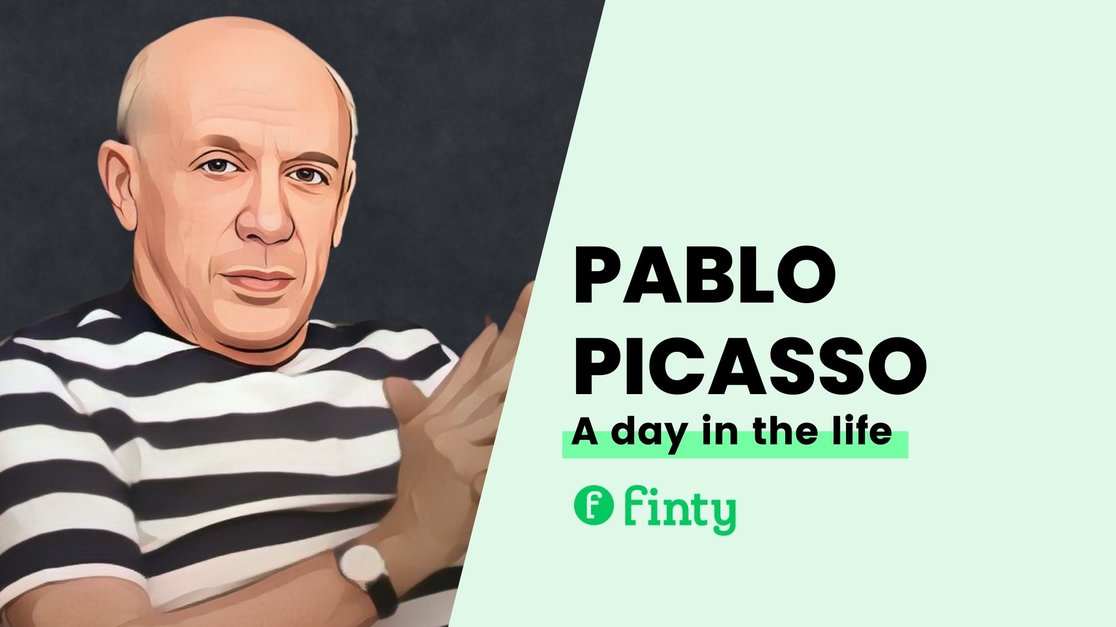Picasso's daily routine was highly unconventional, but it worked for him.
His days were structured around long blocks of uninterrupted work time lasting well into the small hours of the morning. He was incredibly productive, with over 50,000 pieces of art being credited to him.
So, if your morning routine isn’t working, take inspiration from Picasso and try something new.

Inside a day in the life of Pablo Picasso
Key takeaways
- Picasso would wake up at 11 a.m. — later than most people.
- He would work eight hours in the afternoon and evening, followed by a one-hour break.
- He would then work for another two to four hours late at night.
- Picasso believed his long hours of uninterrupted work allowed him to be creative and productive.
Mornings
In a video, filmmaker Nathaniel Drew tries to tap into the secret of Picasso’s productivity by adopting that schedule and painting for most of his waking hours.
Picasso would start his day with breakfast and leisure time with friends. This was his way of relaxing before work, which many people might consider a waste of time. However, Picasso believed this leisure time was crucial in allowing him to be focused and productive later in the day.
Afternoons
At 2 p.m., Picasso would start his first work session, which would last eight hours. He could be so productive because he never got tired of painting and enjoyed the process no matter how long it lasted. The artist once stated, “While I work, I leave my body outside the door, the way Muslims take off their shoes before entering a mosque.”
Evenings
At 10 p.m., Picasso would take a short break for dinner and allow himself some time for relaxation. His second work session started at 11 p.m. and lasted up to four hours. This shorter session was still much longer than most people’s work sessions, but Picasso was also productive and focused during this time.
Eventually, he put down his brushes at around 3 a.m. to get some sleep and energy for another day at the easel.

